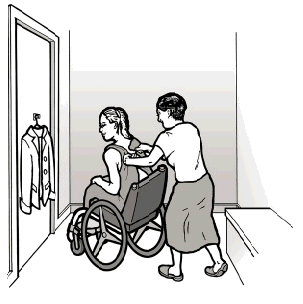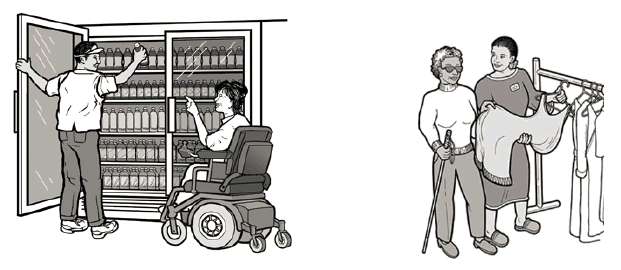Policies and Procedures
Your business, like all others, has formal and informal policies, practices, and procedures that keep it running smoothly. However, sometimes your policies or procedures can inadvertently make it difficult or impossible for a customer with a disability to access your goods and services. That is why the ADA requires businesses to make “reasonable modifications” to their usual ways of doing things when serving people with disabilities. Most modifications involve only minor adjustments in policies. For example, a day care center that has two scheduled snack times must modify this policy to allow a child with diabetes to bring food for an extra snack if necessary. A clothing store must modify a policy of permitting only one person at a time in a dressing room for a person with a disability who is shopping with a companion and needs the companion’s assistance to try on clothes. Anything that would result in a “fundamental alteration” —a change in the essential nature of your business—is not required. For example, a clothing store is not required to provide dressing assistance for a customer with a disability if this is not a service provided to other customers.

Allowing a second person in a dressing room is one way to modify policies.
Customers with disabilities may need different types of assistance to access your goods and services. For example, a grocery store clerk is expected to assist a customer using a mobility device by retrieving merchandise from high shelves. A person who is blind may need assistance maneuvering through a store’s aisles. A customer with an intellectual disability may need assistance in reading product labels and instructions. Usually the customer will tell you up front if he or she needs assistance, although some customers may wait to be asked “may I help you?” When only one staff person is on duty, it may or may not be possible for him or her to assist a customer with a disability. The business owner or manager should advise the staff person to assess whether he or she can provide the assistance that is needed without jeopardizing the safe operation of the business.

Retrieving out of reach items and describing items for sale are ways to provide assistance to customers with disabilities.

User Comments/Questions
Add Comment/Question